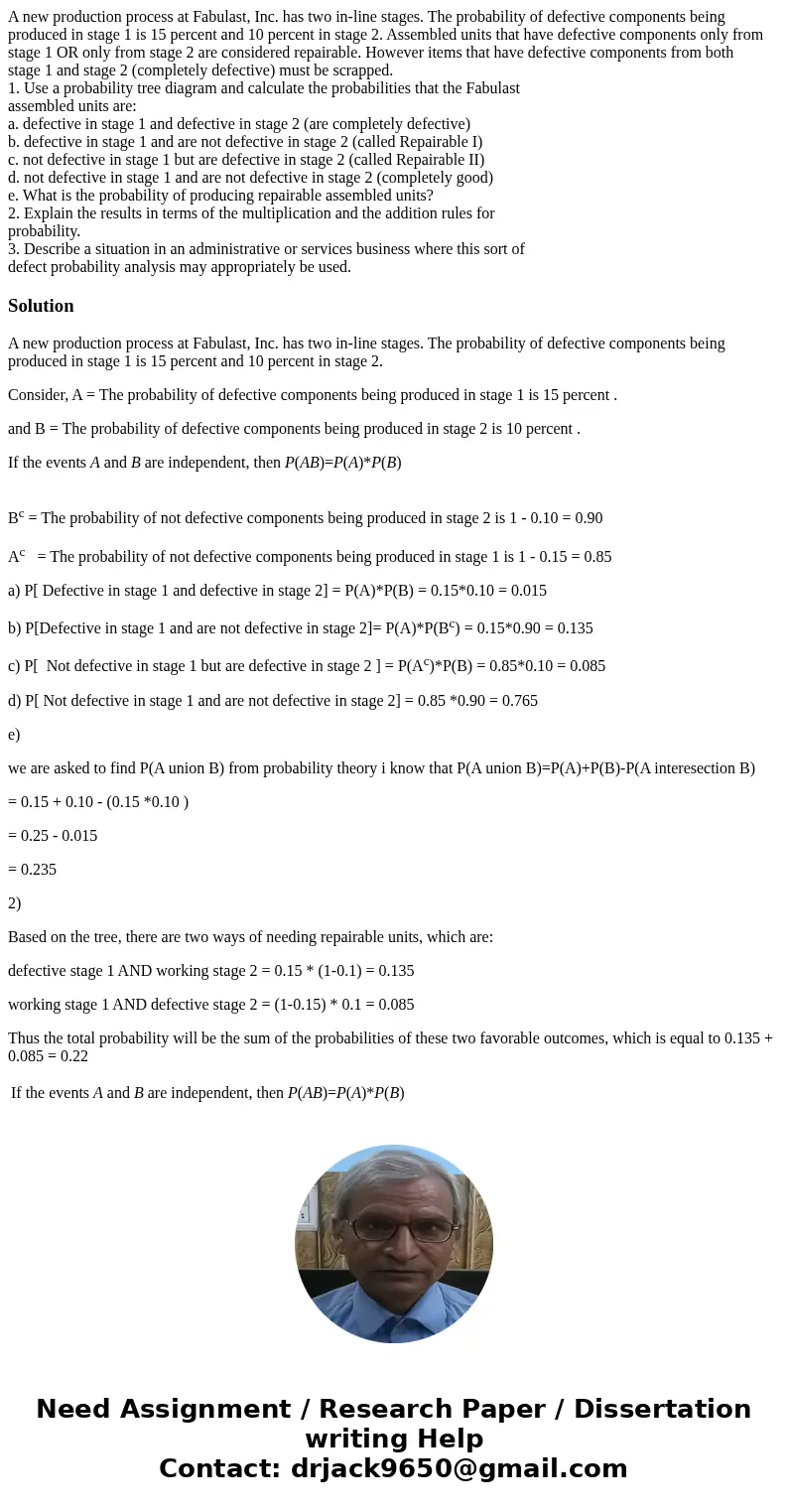A new production process at Fabulast Inc has two inline stag
A new production process at Fabulast, Inc. has two in-line stages. The probability of defective components being produced in stage 1 is 15 percent and 10 percent in stage 2. Assembled units that have defective components only from stage 1 OR only from stage 2 are considered repairable. However items that have defective components from both
stage 1 and stage 2 (completely defective) must be scrapped.
1. Use a probability tree diagram and calculate the probabilities that the Fabulast
assembled units are:
a. defective in stage 1 and defective in stage 2 (are completely defective)
b. defective in stage 1 and are not defective in stage 2 (called Repairable I)
c. not defective in stage 1 but are defective in stage 2 (called Repairable II)
d. not defective in stage 1 and are not defective in stage 2 (completely good)
e. What is the probability of producing repairable assembled units?
2. Explain the results in terms of the multiplication and the addition rules for
probability.
3. Describe a situation in an administrative or services business where this sort of
defect probability analysis may appropriately be used.
Solution
A new production process at Fabulast, Inc. has two in-line stages. The probability of defective components being produced in stage 1 is 15 percent and 10 percent in stage 2.
Consider, A = The probability of defective components being produced in stage 1 is 15 percent .
and B = The probability of defective components being produced in stage 2 is 10 percent .
If the events A and B are independent, then P(AB)=P(A)*P(B)
Bc = The probability of not defective components being produced in stage 2 is 1 - 0.10 = 0.90
Ac = The probability of not defective components being produced in stage 1 is 1 - 0.15 = 0.85
a) P[ Defective in stage 1 and defective in stage 2] = P(A)*P(B) = 0.15*0.10 = 0.015
b) P[Defective in stage 1 and are not defective in stage 2]= P(A)*P(Bc) = 0.15*0.90 = 0.135
c) P[ Not defective in stage 1 but are defective in stage 2 ] = P(Ac)*P(B) = 0.85*0.10 = 0.085
d) P[ Not defective in stage 1 and are not defective in stage 2] = 0.85 *0.90 = 0.765
e)
we are asked to find P(A union B) from probability theory i know that P(A union B)=P(A)+P(B)-P(A interesection B)
= 0.15 + 0.10 - (0.15 *0.10 )
= 0.25 - 0.015
= 0.235
2)
Based on the tree, there are two ways of needing repairable units, which are:
defective stage 1 AND working stage 2 = 0.15 * (1-0.1) = 0.135
working stage 1 AND defective stage 2 = (1-0.15) * 0.1 = 0.085
Thus the total probability will be the sum of the probabilities of these two favorable outcomes, which is equal to 0.135 + 0.085 = 0.22
| If the events A and B are independent, then P(AB)=P(A)*P(B) |

 Homework Sourse
Homework Sourse